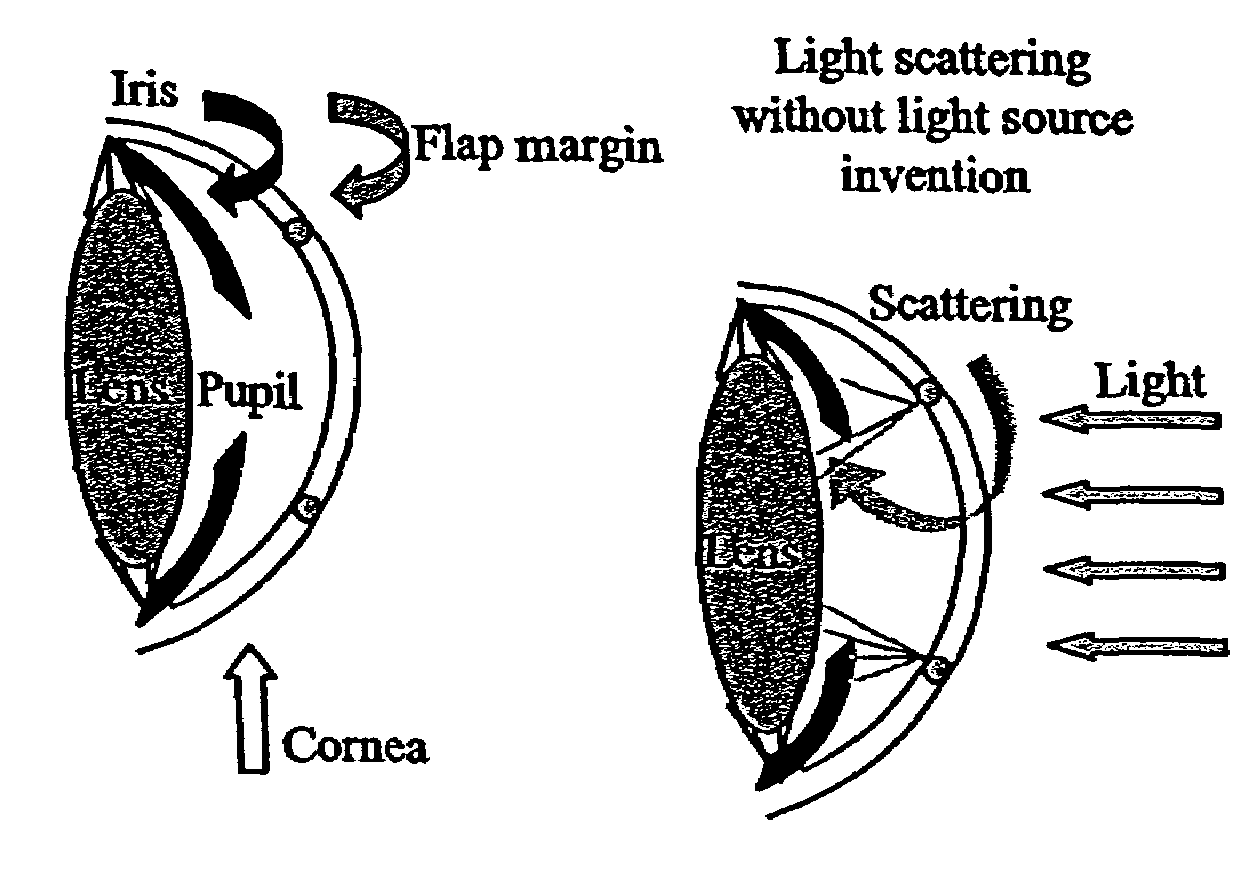Method and apparatus for reducing visual aberrations
a technology of aberration and visual aberration, applied in the field of visual aberration correction, can solve the problems of affecting the normal operation of the eye, so as to reduce or eliminate the scarring caused by eye injury, reduce or eliminate the effect of visual aberration and small pupil
- Summary
- Abstract
- Description
- Claims
- Application Information
AI Technical Summary
Benefits of technology
Problems solved by technology
Method used
Image
Examples
Embodiment Construction
[0016]The present invention is counter-intuitive since it uses light itself to cause a restriction in the amount of light that can enter the eye. As is known, the human pupil responds to the exposure of light with maximum constrictive sensitivity to light of ˜560 nm (green-yellow); sensitivity is less in the blue and red portions of the spectrum. The diameter of the pupil is related to illumination. One measure of this relation is as follows:
log d=0.8558−0.000401(log b+8.60)3
where d is pupil diameter in mm and b is luminance in cd / m2. [Davson H. Physiology of the Eye, 5th Ed. Pergamon Press: New York; 1990, p. 757.] The pupil responds to both blinking and steady light. Direct light reflex is the constrictive response of the pupil to light on the eye, while indirect or consensual light reflex is the constrictive response of the pupil of the unstimulated eye. Stimulation of both eyes causes greater constriction of the pupils than light stimulation of a single eye.
[0017]The invention ...
PUM
 Login to View More
Login to View More Abstract
Description
Claims
Application Information
 Login to View More
Login to View More - R&D
- Intellectual Property
- Life Sciences
- Materials
- Tech Scout
- Unparalleled Data Quality
- Higher Quality Content
- 60% Fewer Hallucinations
Browse by: Latest US Patents, China's latest patents, Technical Efficacy Thesaurus, Application Domain, Technology Topic, Popular Technical Reports.
© 2025 PatSnap. All rights reserved.Legal|Privacy policy|Modern Slavery Act Transparency Statement|Sitemap|About US| Contact US: help@patsnap.com



